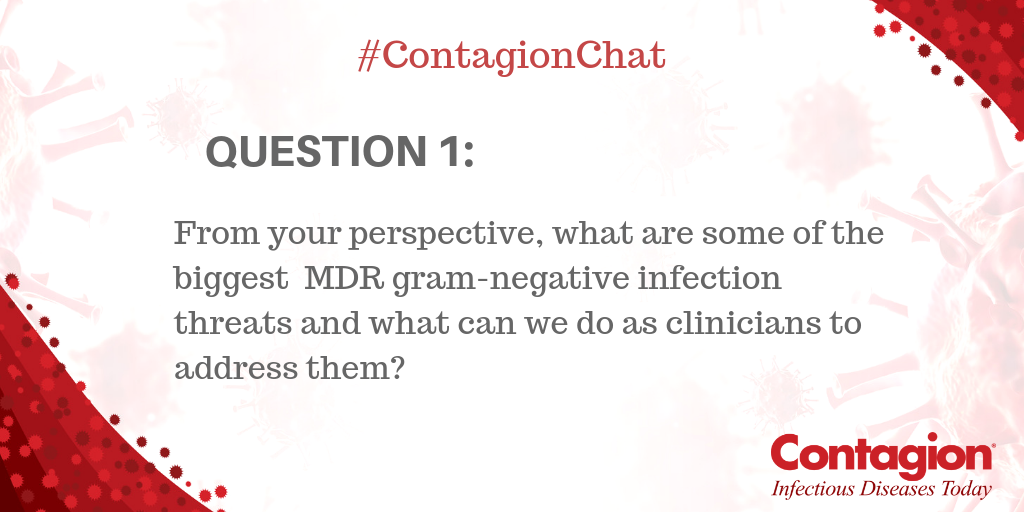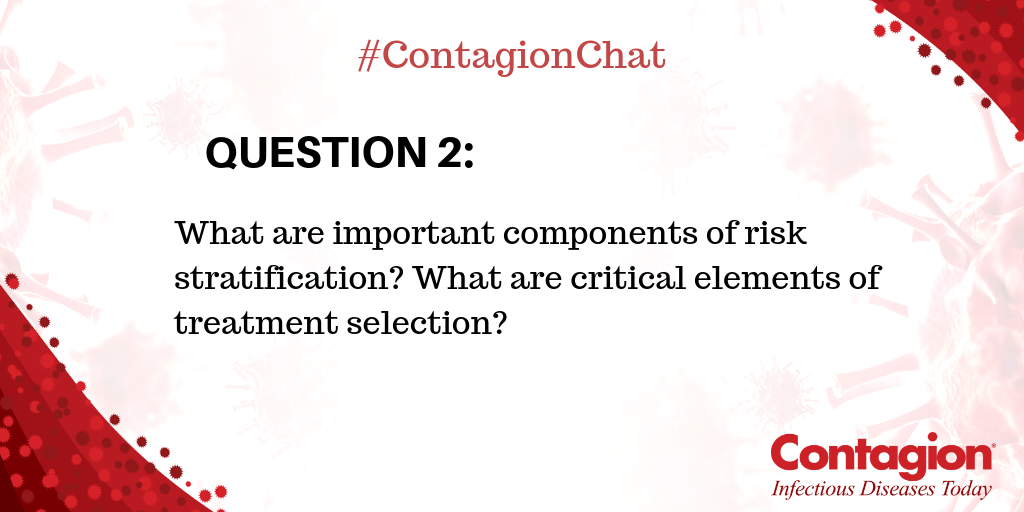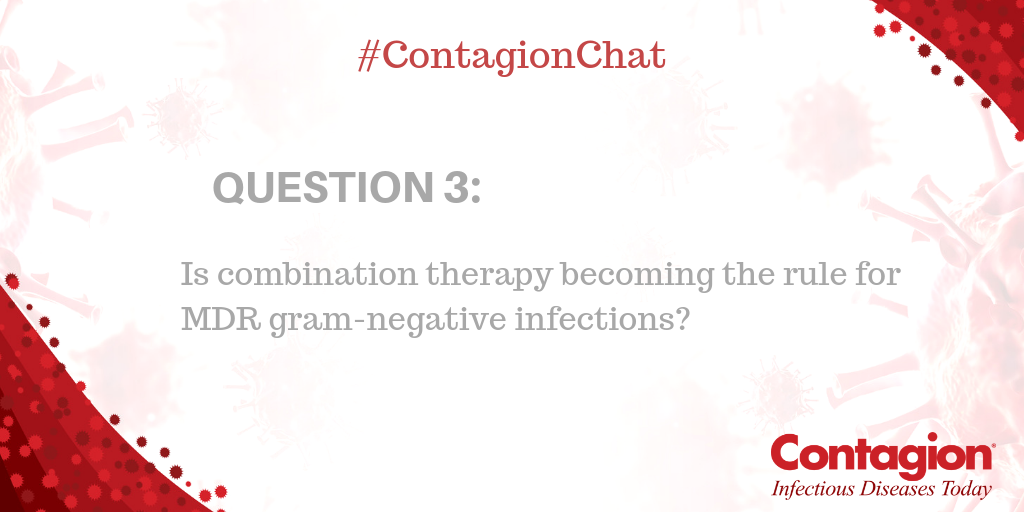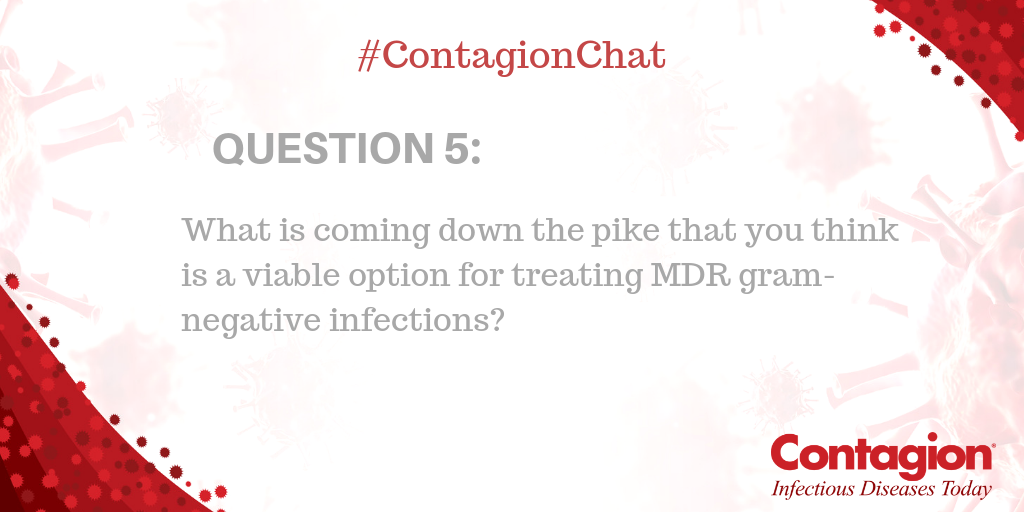#ContagionChat Roundup: Highlights From Our First-Ever TweetChat
#ICYMI, here are the highlights from Contagion®'s first-ever TweetChat on Treating Gram-Negative Infections in the Era of Resistance.
Contagion® hosted its first-ever TweetChat on Friday, February 22, 2019 on Treating Gram-Negative Infections in the Era of Resistance. Hosted by our editor-in-chief, Dr. Jason Gallagher, and featuring insight from our panel of section editors, the discussion attracted infectious disease pharmacists and clinicians who went back and forth on the challenges facing the industry.
Here are the highlights from the first-ever #ContagionChat.

A1- I think MDR Pseudomonas gets overlooked since there are usually options to treat it. The problem is that until recently those options have been aminoglycosides. #ContagionChat
— Jason Gallagher (@JGPharmD) February 22, 2019
Q1 We can support other providers through education on significance of carbapenemase-producing gram-negatives, and prevention measures. #ContagionChat
— Wendy Bamberg (@wendybamberg) February 22, 2019
A1. MRSA, ESBLs, CREs, MDR pseudomonas are the first ones that come to my mind. Strong #ASP programs in both inpatient and outpatient settings that involves teaching and educating colleagues and patients, also supporting cessation of abx use in agriculture #ContagionChat
— Gul Madison, MD (@GulMadison) February 22, 2019
Q1/A2. Although we have glamorized CRE in the popular media, MDR Pseudomonas remains one of our biggest threats and a problematic pathogen we all encounter. Knowing when to initiate treatment with new agents in complicated patients is a challenge #ContagionChat #Pseudoissexytoo
— Ryan Shields (@ryankshields) February 22, 2019
A1- This is what concerns me the most. (From https://t.co/kdzWTgxOS6) #ContagionChat pic.twitter.com/bNcGX5x3Nq
— Jason Gallagher (@JGPharmD) February 22, 2019

2/2 can provide a more appropriate "anchor" to spend that 30 seconds of reasoning on, versus their own intuition and experience. I agree that an ideal tool would have both resistance risk and outcome risk included. #ContagionChat
— Conan MacDougall (@ConanMacDougall) February 22, 2019
Tough question. Recent Abx exposure & hospitalization can help but I do not think we really have a good tool 😔 We really need rapid diagnostics to know organism/resistance earlier
— Antibiotic Tweets (@khalideljaaly) February 22, 2019
A2. I’m not anti-risk stratification, I just find them to have use that is more limited than how they are often presented. The micro history is key, and the proliferation of EHRs has helped. #ContagionChat
— Jason Gallagher (@JGPharmD) February 22, 2019
Also, RDTs do a better job than risk tools at predicting MDROs so that is relieving some of burden to check RFs at baseline. However not everyone has RDTs or can get results as “rapidly” as we’d like. Hence risk tools are still useful in some settings/syndromes. #ContagionChat
— Julie Ann Justo (@julie_justo) February 22, 2019

A3- Empirically is an open question, best left to each institution and what that antibiogram dictates. Definitively, no. Personally, as a rule, I am not a fan. Some of the new beta-lactamase inhibitor combinations have taken the role of combo therapy for me. #ContagionChat
— Jason Gallagher (@JGPharmD) February 22, 2019
A3. Hey, I like ceftaz-avi and importantly its not colistin! Regarding combo tx - if you’re treating MBL-producing CRE — then yes, of course! Otherwise we don’t know yet, nor do we know which combinations are most effective #ContagionChat
— Ryan Shields (@ryankshields) February 22, 2019
Yes, would be curious to hear opinions on CAZ-AVI + Aztreonam for MBL if double disk test positive. Would you add a another agent, since this is really just AZT-AVI “monotherapy”? #ContagionChat
— Seth Bloom (@SethMBloomMDPhD) February 23, 2019
I think sometimes combination therapy is about "treating ourselves". Sure maybe adding tobra means your patient is putatively "covered", but is that really helping for that pneumonia? Therapy with a single potent beta-lactam likely superior to less active BL + AG #ContagionChat
— Conan MacDougall (@ConanMacDougall) February 22, 2019
A3. Depends on your local antibiograms. In our institution where there is robust ASP presence and relative rarity of significant MDRs among gnrs, double empirical coverage is not the norm, in fact it is quite rare. #ContagionChat
— Gul Madison, MD (@GulMadison) February 22, 2019
A3. “Not colistin” is my favorite attribute of many drugs.
I think the combination = best mantra for CRE is frustrating, since studies suggesting it largely did not have CAZ-AVI, Mero-vabor, etc in them. #ContagionChat
— Jason Gallagher (@JGPharmD) February 22, 2019

Q4 Collaboration among health care and public health is key to prevention of transmission of MDR gram-negative infection/colonization. #ContagionChat
— Wendy Bamberg (@wendybamberg) February 22, 2019
Q4 Communicate actively with your state and local health departments. They are interested in your experiences with MDR gram-negatives. #ContagionChat
— Wendy Bamberg (@wendybamberg) February 22, 2019
Q4/A3. On balance, we need to continue to push the envelope for better observational study designs and more sophisticated statistical methods that include clinically-relevant endpoints. ARLG and @davidvanduin have good examples (2/2) https://t.co/4YtBCUvhiB #ContagionChat pic.twitter.com/vmnOQ3WfVc
— Ryan Shields (@ryankshields) February 22, 2019

We actually went the whole bacteriophage route for XDR Acinetobacter recently, got FDA & IRB approval, phages made - and there is now $$$$$ worth of little virus sitting unused in the pharmacy fridge because patient went to comfort care first. #ContagionChat
— Conan MacDougall (@ConanMacDougall) February 22, 2019
A5 #ContagionChat excited about plazomicin & cefiderocol
— Antibiotic Tweets (@khalideljaaly) February 22, 2019
Q5: what’s coming in anti-GNR agents? Cefiderocol most exciting I think. Great spectrum with A. baumannii but also less common bugs like achromobacter. Concerns are price and durability (I.e. how long before @ryankshields reports first treatment-emergent R??) #ContagionChat
— David van Duin (@davidvanduin) February 22, 2019
A5- I am excited about cefiderocol. It has a broad-spectrum against MDR GNRs and a beta-lactam “backbone”. I am concerned about where it will be priced. IV fosfomycin and imipenem-relebactam will be interesting as well. It will be nice to have options. #ContagionChat
— Jason Gallagher (@JGPharmD) February 22, 2019
